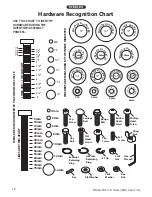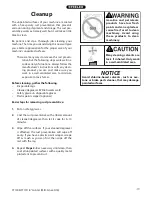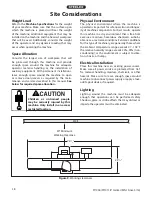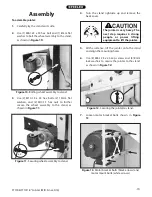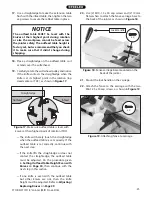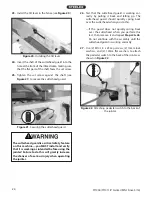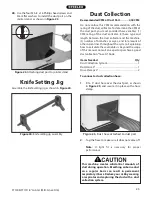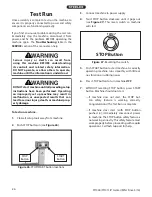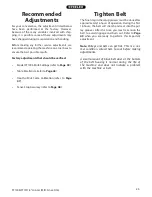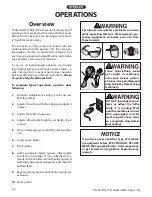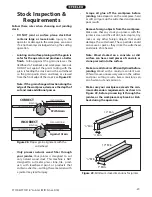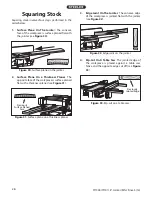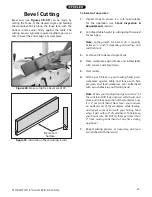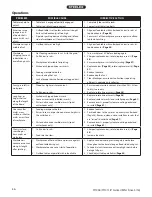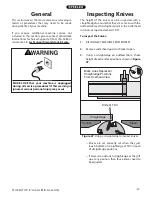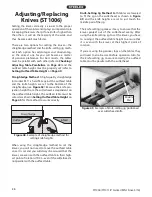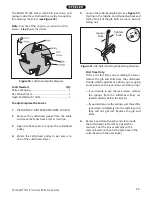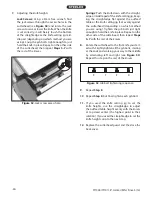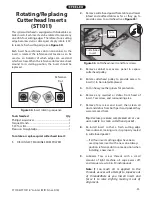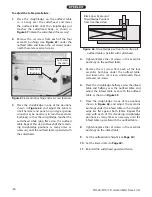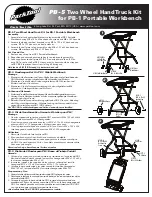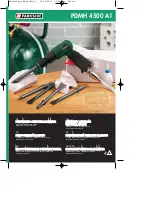
ST1006/ST1011 8" Jointer (Mfd. Since 3/16)
-29-
Failure to use push blocks when surface plan-
ing could result in your hands contacting rotat-
ing cutterhead, which will cause serious per-
sonal injury. ALWAYS use push blocks when
surface planing on jointer!
To surface plane on jointer:
1. Inspect stock to ensure it is safe and suitable
for the operation (see Stock Inspection &
Requirements section).
2. Set infeed table height to desired cutting depth
for each pass.
IMPORTANT: For safety reasons, do not exceed
a cutting depth of
1
⁄
16
" per pass when surface
planing.
3. Set fence to 90˚.
4. Start jointer.
5. Place workpiece firmly against fence and infeed
table.
IMPORTANT: To ensure workpiece remains sta-
ble during cut, concave sides of workpiece must
face toward table and fence.
6. Feed workpiece completely across cutterhead
while keeping it firmly against fence and tables
during the entire cut.
IMPORTANT: Keep hands at least 4" away from
cutterhead during the entire cut. Instead of
allowing a hand to pass directly over cutter-
head, lift it up and over cutterhead, and safely
reposition it on the outfeed side to continue
supporting workpiece. Use push blocks when-
ever practical to further reduce risk of accidental
hand contact with cutterhead.
7. Repeat Step 6 until entire surface is flat.
Tip:
When squaring up stock, cut opposite side of
workpiece with a planer instead of the jointer to
ensure boths sides are parallel.
NOTICE
If you are not experienced with a jointer,
set depth of cut to "0" and practice feeding
workpiece across the tables as described for
each of the jointing procedures. This process
will better prepare you for actual operation.
Figure 34. Example of surface planing operations.
Figure 35. Illustration of surface planing results.
Surface Planing
The purpose of surface planing (see Figures 34–
35
)
on the jointer is to make one flat face on a piece of
stock to prepare it for thickness planing on a planer.


